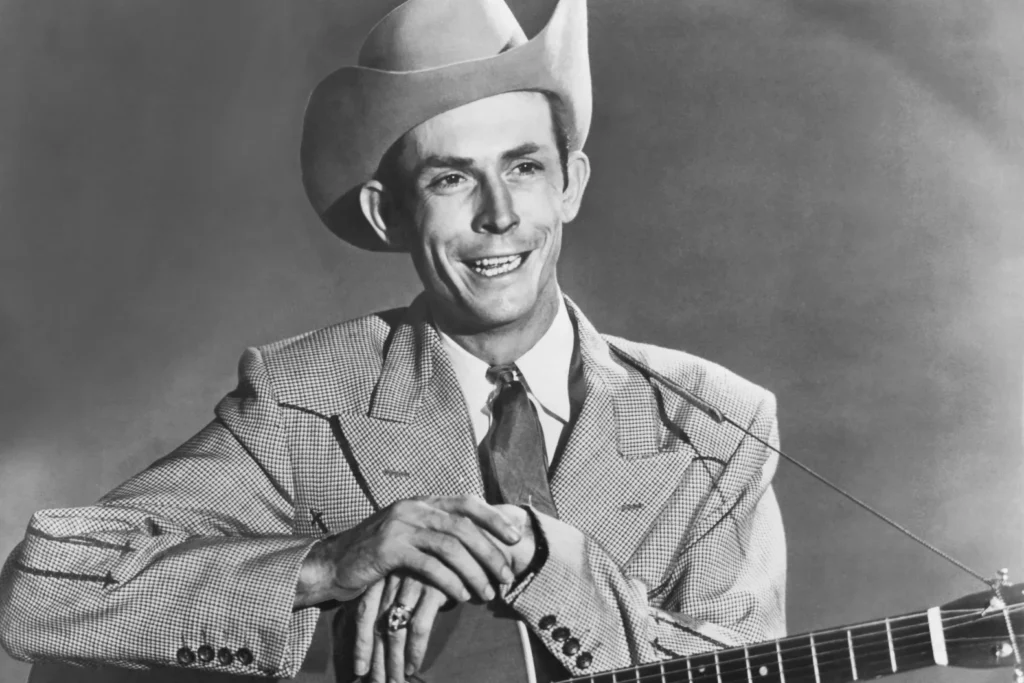A Melancholic Masterpiece That Echoes the Ageless Ache of Unrequited Love

When Hank Williams released Lovesick Blues in 1949, the world was already familiar with his burgeoning genius, yet this song marked a defining moment that transformed his career trajectory. Originally a show tune from the Tin Pan Alley era, Lovesick Blues found new life in Hank’s hands. As part of his performance repertoire, it resonated deeply with audiences, ultimately climbing to the top of the country charts and cementing his place as a preeminent force in American music. It became the cornerstone of his 1950 album Moanin’ the Blues, capturing the zeitgeist of post-war America with its plaintive wail and poignant lyricism.
The story behind Lovesick Blues is as intriguing as its heartfelt delivery. Though Hank did not pen the song himself—it was originally written by Cliff Friend and Irving Mills—the sincerity and raw emotion he injected into every note made it quintessentially his own. When Hank took to the stage at Nashville’s Grand Ole Opry, performing Lovesick Blues to an adoring audience, he electrified the air with a vibrato that seemed to carry the weight of countless loves lost and found again. The ecstatic reception and consequent success were testaments to Hank’s ability to transform a relatively obscure tune into an anthem of universal longing and heartache.
At its core, Lovesick Blues is an exploration of unrequited love’s devastating emotional landscape—a theme timeless in its resonance. Hank’s distinctive yodeling cry cuts through the surface, diving deep into sorrowful depths where love’s pangs are both personal yet universally felt. The song is a masterclass in emotional storytelling; its verses paint a vivid picture of a man ensnared in the throes of love’s aftermath. It captures a profound sense of vulnerability—a hallmark of Hank’s musical genius—and offers listeners a mirror reflecting their own romantic tribulations.
Musically, Lovesick Blues is an intricate tapestry woven from simple elements. Its structure draws on traditional country roots yet breaks free through Hank’s dynamic interpretation. The fusion of steel guitar twangs with his quavering voice creates an atmosphere that oscillates between despair and hopefulness—an auditory embodiment of love’s paradoxical nature. The song’s melody lingers long after the final note fades, much like a haunting echo of emotions that refuse to be easily quelled.
In examining the cultural legacy of Lovesick Blues, one must acknowledge its pivotal role in shaping country music’s evolution. It demonstrated that authenticity and emotional depth could propel songs beyond mere entertainment, transforming them into touchstones of human experience. For Hank Williams, this song was not merely a hit but rather an indelible chapter in a career that influenced generations of musicians across genres.
Ultimately, Lovesick Blues endures as more than just a chart-topping single from 1949; it stands as an emblem of timeless artistry—a melancholic masterpiece that continues to speak to the soul’s deepest yearnings with each listen.